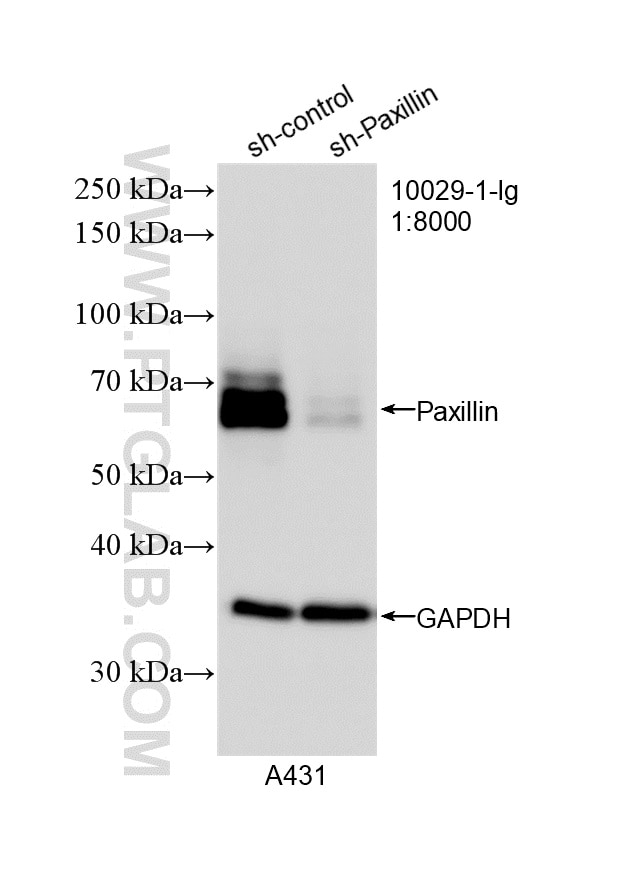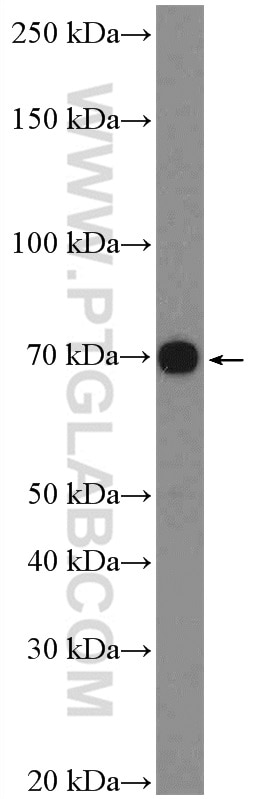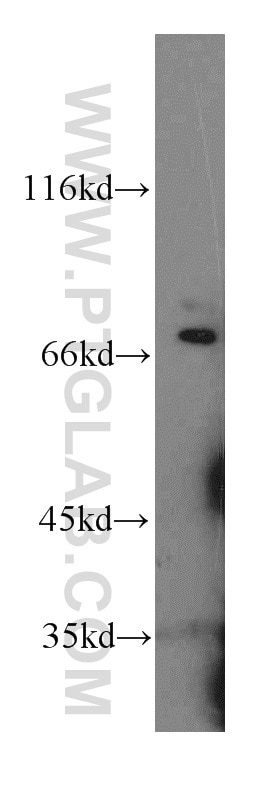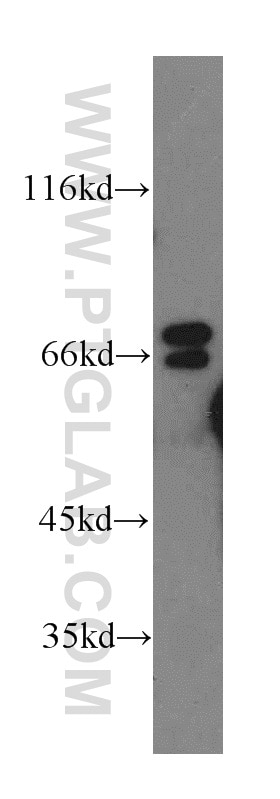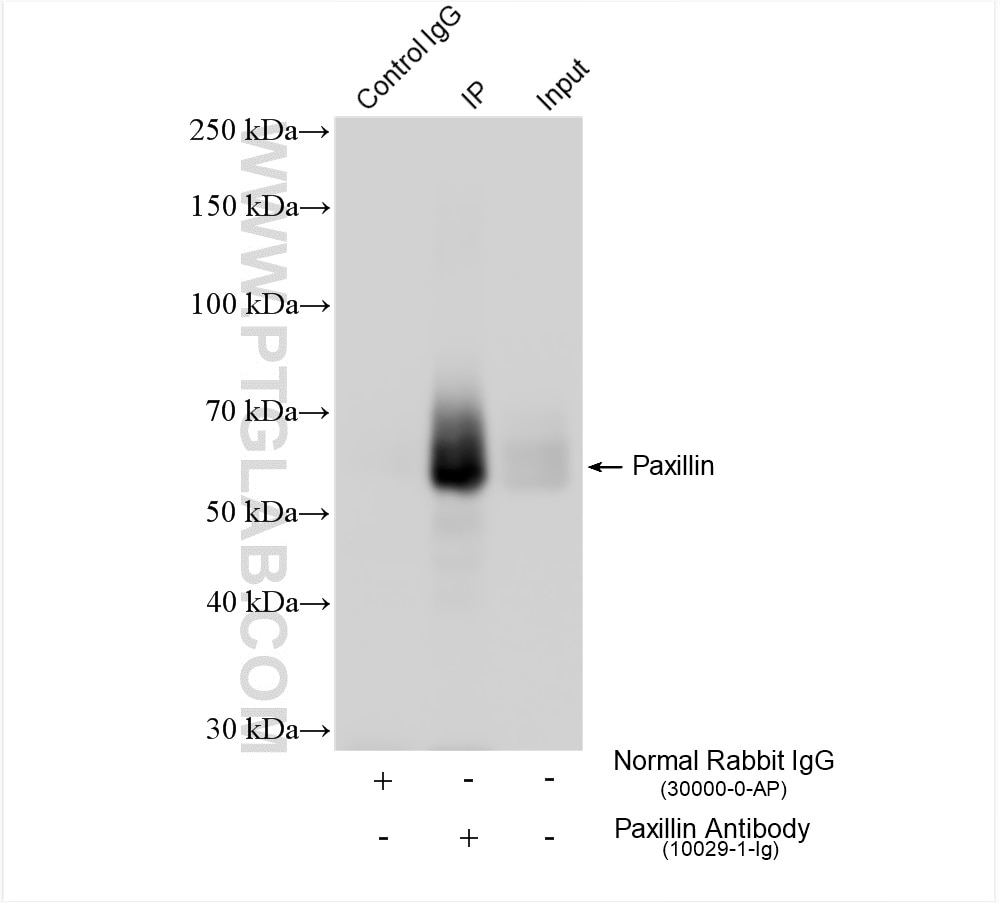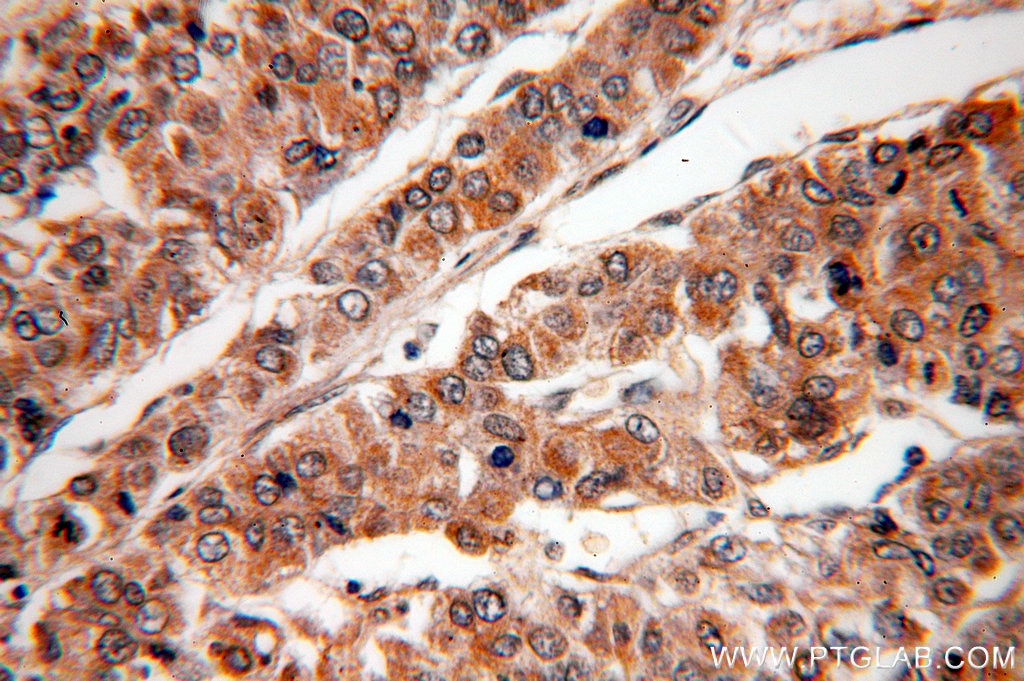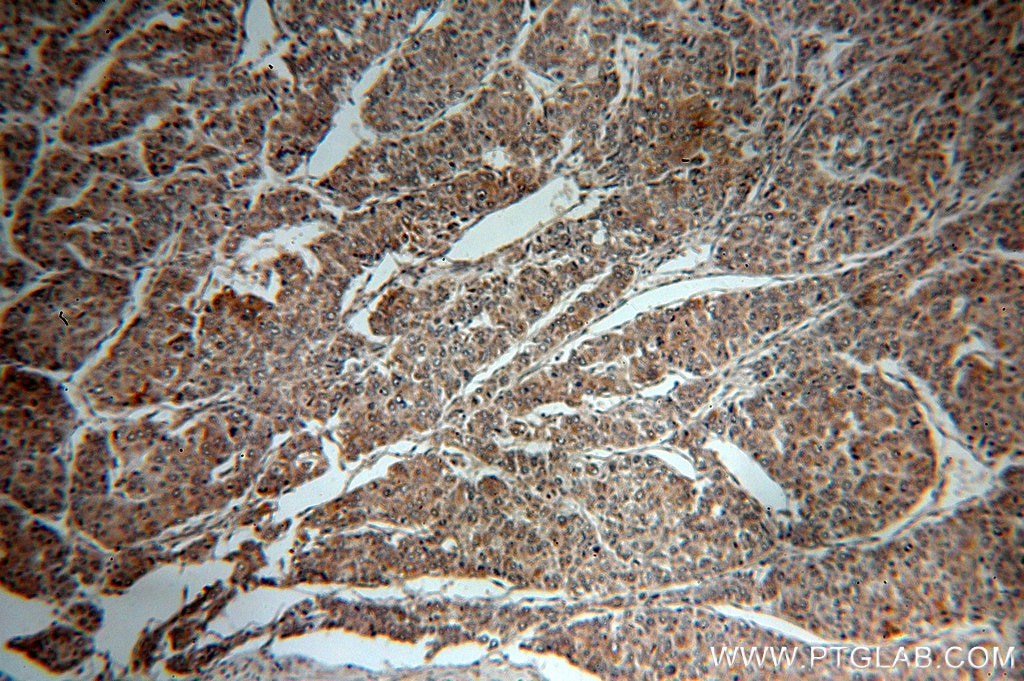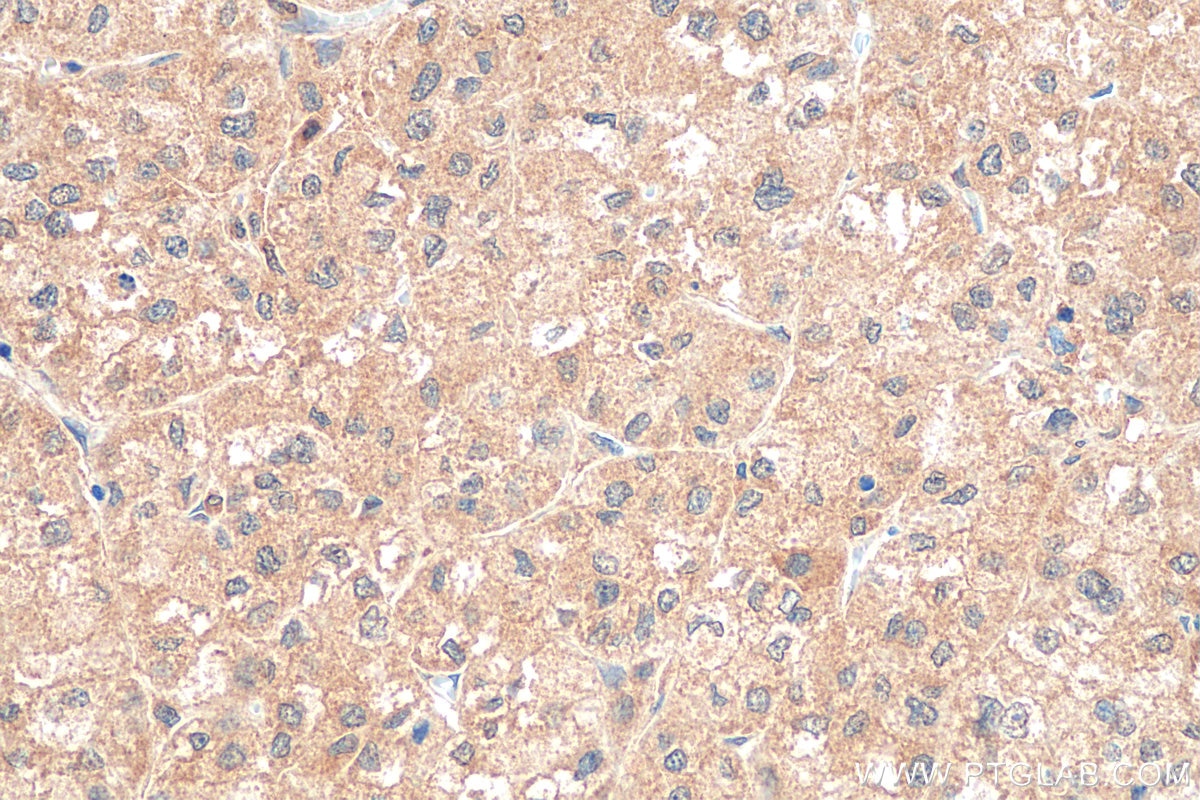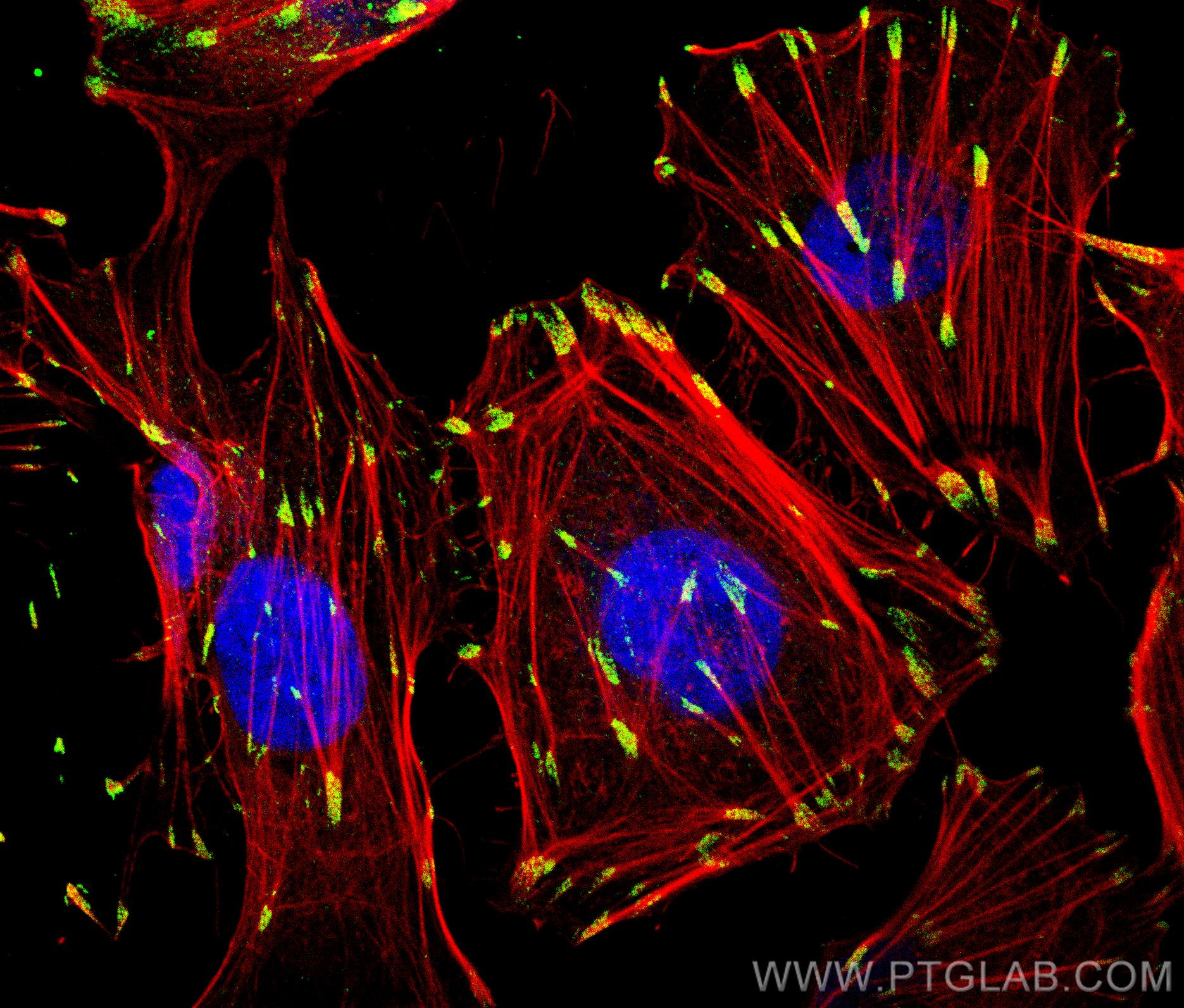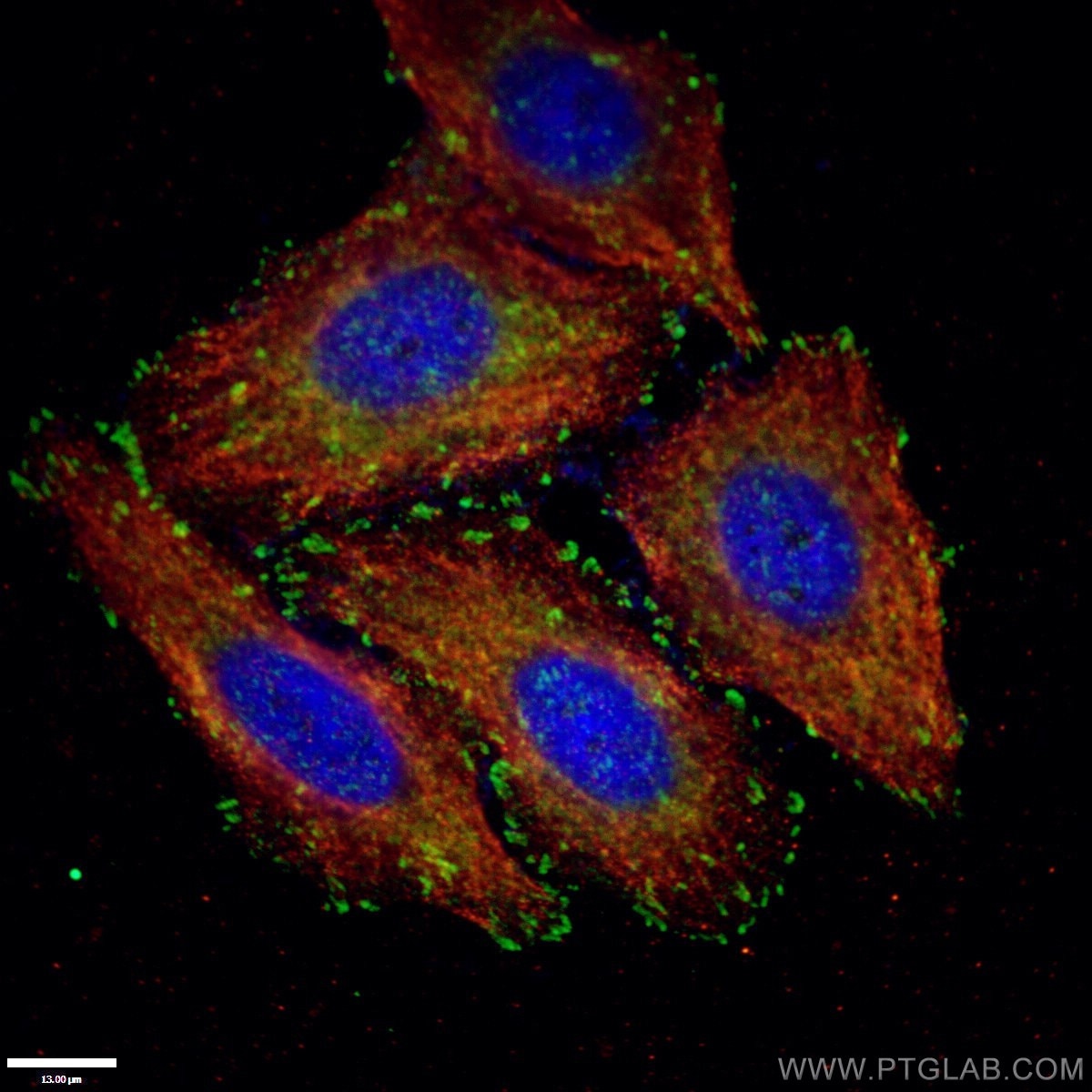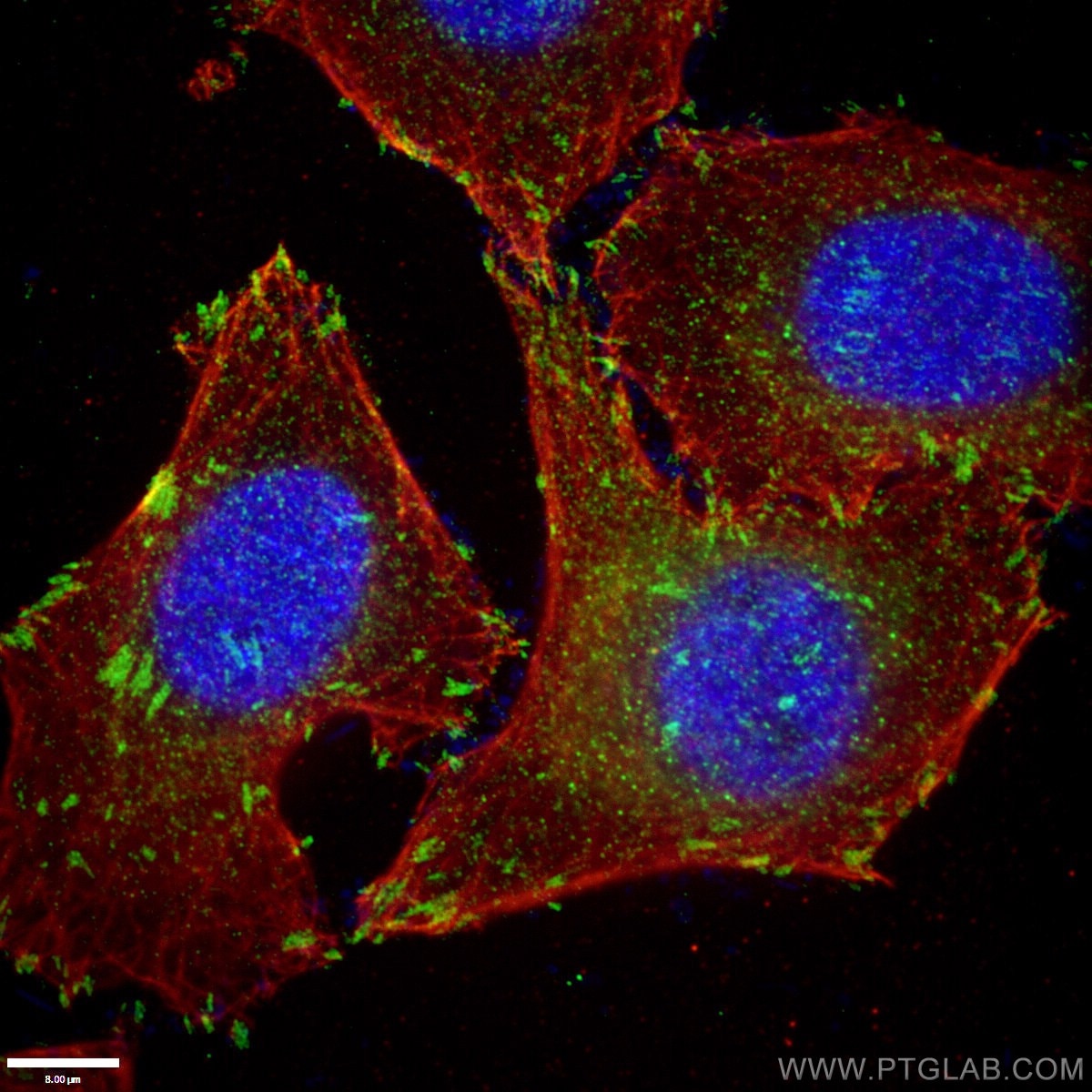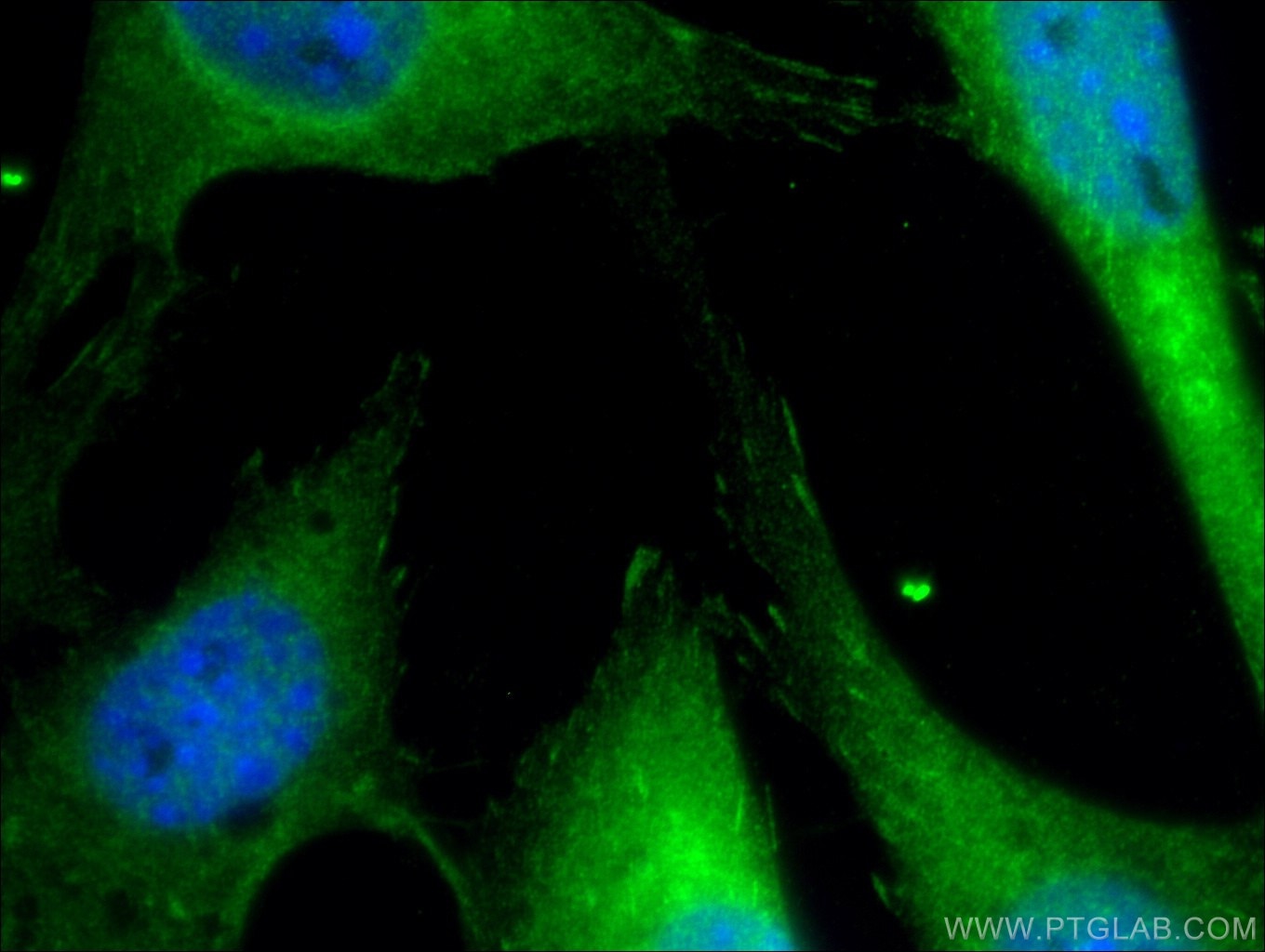Tested Applications
| Positive WB detected in | A431 cells, COLO 320 cells, Jurkat cells, MCF-7 cells |
| Positive IP detected in | A431 cells |
| Positive IHC detected in | human liver cancer tissue Note: suggested antigen retrieval with TE buffer pH 9.0; (*) Alternatively, antigen retrieval may be performed with citrate buffer pH 6.0 |
| Positive IF/ICC detected in | HUVEC cells, NIH/3T3 cells, HepG2 cells |
Recommended dilution
| Application | Dilution |
|---|---|
| Western Blot (WB) | WB : 1:2000-1:16000 |
| Immunoprecipitation (IP) | IP : 0.5-4.0 ug for 1.0-3.0 mg of total protein lysate |
| Immunohistochemistry (IHC) | IHC : 1:50-1:500 |
| Immunofluorescence (IF)/ICC | IF/ICC : 1:50-1:500 |
| It is recommended that this reagent should be titrated in each testing system to obtain optimal results. | |
| Sample-dependent, Check data in validation data gallery. | |
Published Applications
| WB | See 13 publications below |
| IHC | See 3 publications below |
| IF | See 9 publications below |
Product Information
10029-1-Ig targets Paxillin in WB, IHC, IF/ICC, IP, ELISA applications and shows reactivity with human, mouse samples.
| Tested Reactivity | human, mouse |
| Cited Reactivity | human, mouse, rat |
| Host / Isotype | Rabbit / IgG |
| Class | Polyclonal |
| Type | Antibody |
| Immunogen |
Peptide Predict reactive species |
| Full Name | paxillin |
| Calculated Molecular Weight | 68 kDa |
| Observed Molecular Weight | 68 kDa |
| GenBank Accession Number | NM_002859 |
| Gene Symbol | Paxillin |
| Gene ID (NCBI) | 5829 |
| RRID | AB_513929 |
| Conjugate | Unconjugated |
| Form | Liquid |
| Purification Method | Protein A purification |
| UNIPROT ID | P49023 |
| Storage Buffer | PBS with 0.02% sodium azide and 50% glycerol, pH 7.3. |
| Storage Conditions | Store at -20°C. Stable for one year after shipment. Aliquoting is unnecessary for -20oC storage. 20ul sizes contain 0.1% BSA. |
Background Information
PXN (paxillin) is a 68 kDa scaffold protein that interacts with multiple structural and signaling proteins and regulates cell adhesion, migration, proliferation, and apoptosis. PXN is thought to play an important role in tumor migration, invasion, and metastasis (21045234). PXN has been identified as a direct substrate of protein tyrosine phosphatase receptor-type T (PTPRT), a potent tumor suppressor gene. Increased phospho-PXN at tyrosine residue 88 (Y88) has been found as a common feature of human colon cancers (20133777).
Protocols
| Product Specific Protocols | |
|---|---|
| IF protocol for Paxillin antibody 10029-1-Ig | Download protocol |
| IHC protocol for Paxillin antibody 10029-1-Ig | Download protocol |
| IP protocol for Paxillin antibody 10029-1-Ig | Download protocol |
| WB protocol for Paxillin antibody 10029-1-Ig | Download protocol |
| Standard Protocols | |
|---|---|
| Click here to view our Standard Protocols |
Publications
| Species | Application | Title |
|---|---|---|
Mol Cell Direct epitranscriptomic regulation of mammalian translation initiation through N4-acetylcytidine. | ||
Sci Adv Bioactive fiber-reinforced hydrogel to tailor cell microenvironment for structural and functional regeneration of myotendinous junction | ||
Bone Res Impairment of rigidity sensing caused by mutant TP53 gain of function in osteosarcoma | ||
Cell Rep Mechanotransduction in response to ECM stiffening impairs cGAS immune signaling in tumor cells | ||
Cell Death Dis ZC3H15 promotes glioblastoma progression through regulating EGFR stability. | ||
Acta Pharmacol Sin Reduced intracellular chloride concentration impairs angiogenesis by inhibiting oxidative stress-mediated VEGFR2 activation. |
Reviews
The reviews below have been submitted by verified Proteintech customers who received an incentive for providing their feedback.
FH Thomas (Verified Customer) (09-22-2022) | Works in WB (pulldown via PAK1) and IF (costained with F-Actin in cyan)
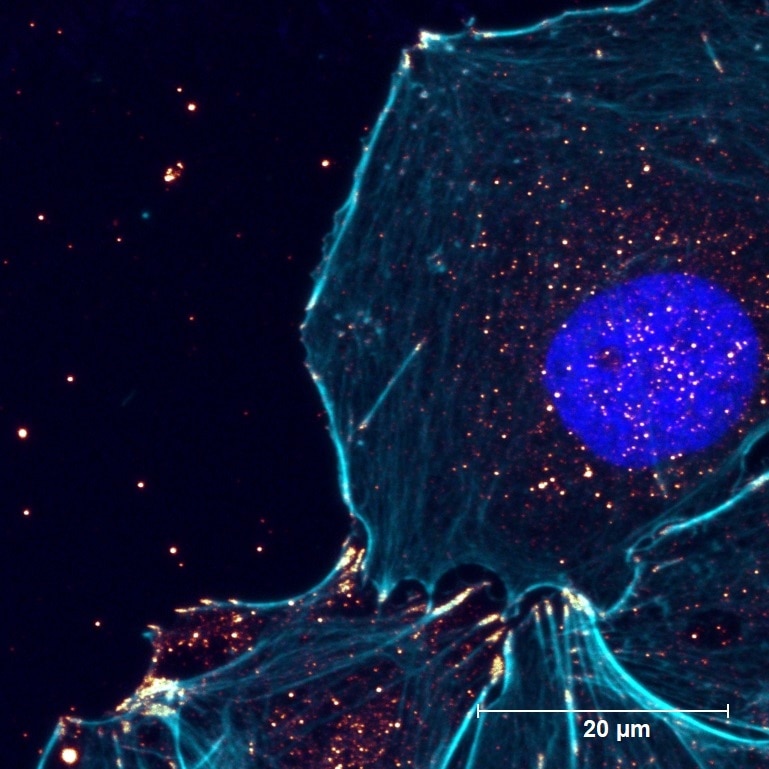 |
FH Boyan (Verified Customer) (03-11-2019) | For WB, besides the expected band, it also recognised some other non-specific bands; for IF, it could label the cell cortex localisation, partially co-localised with Actin.
|

